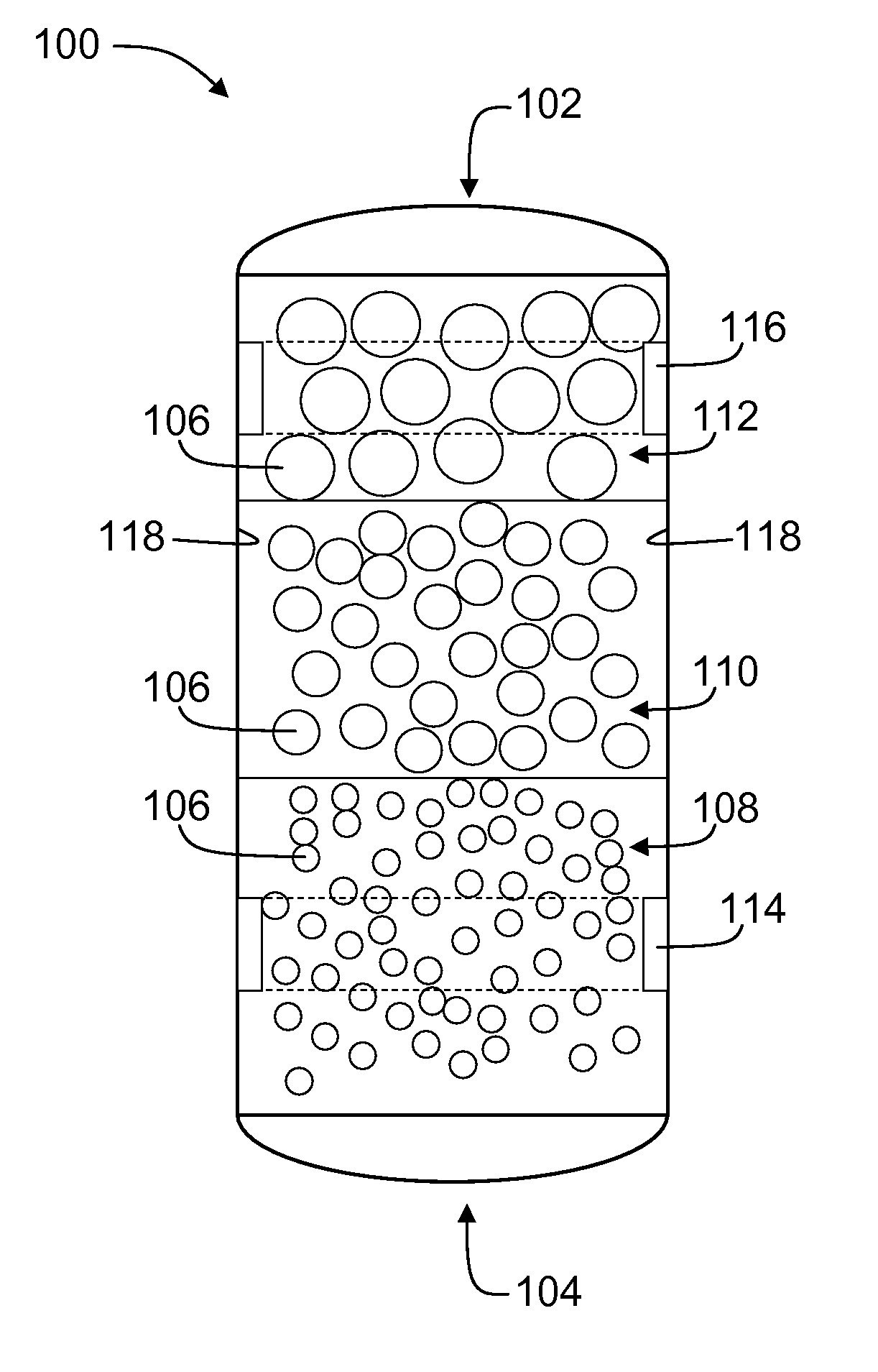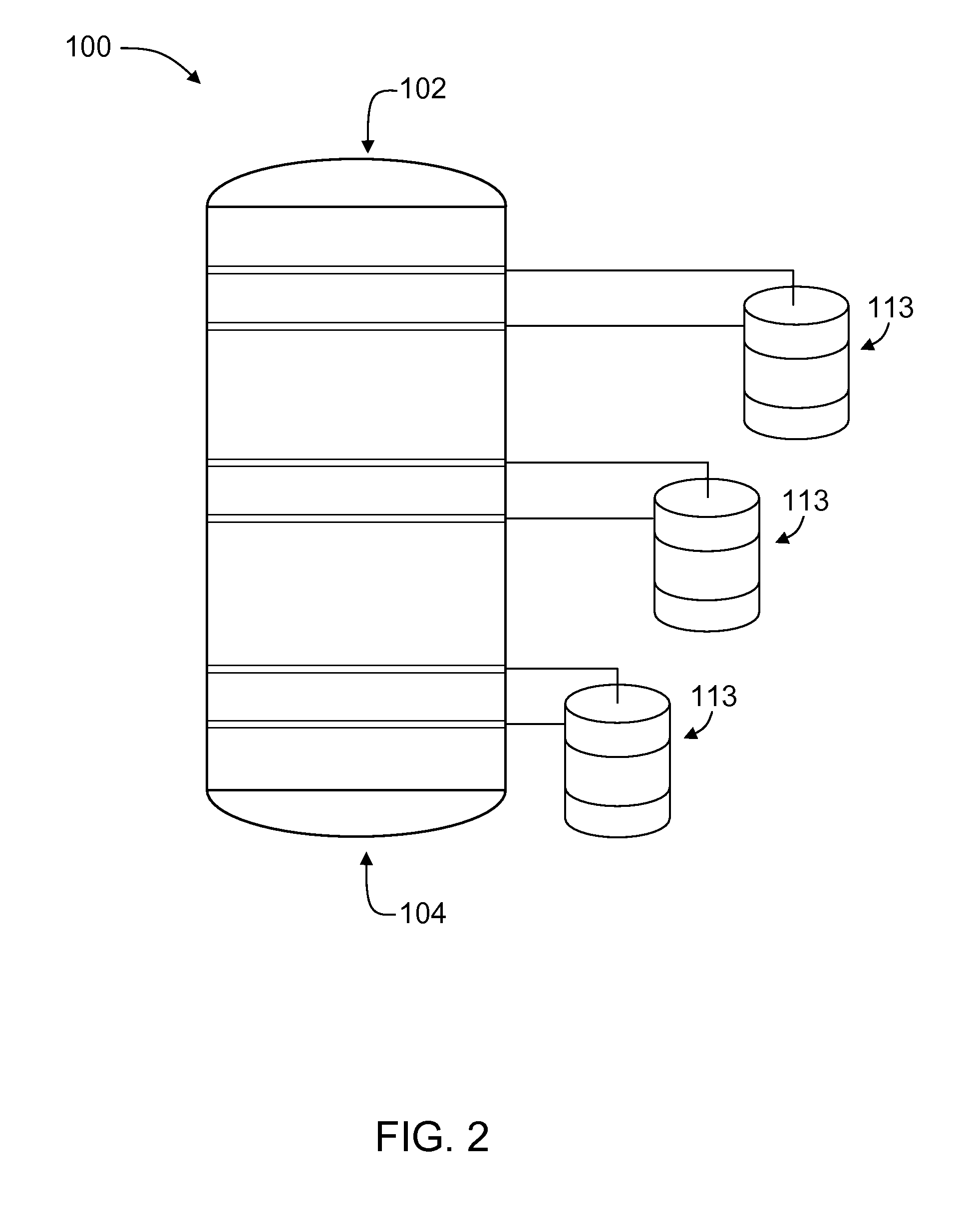Methods and system for removing impurities from heavy fuel
- Summary
- Abstract
- Description
- Claims
- Application Information
AI Technical Summary
Benefits of technology
Problems solved by technology
Method used
Image
Examples
example 1
Homogeneously Packed Britesorb C-935
[0035]Initially, two adsorption columns, operated in series, were packed with 8.0 grams of silica xerogel adsorbent, Britesorb C-935. The column feed was prepared by mixing petroleum ether and Saudi crude oil in a 4:1 ratio of petroleum ether to Saudi crude oil. The feed mixture was blended and the resulting mixture was centrifuged to remove precipitate containing asphaltenes and other non-soluble species. The precipitate was approximately 14 wt. % of the original oil. The bulk Saudi crude oil, prior to being mixed with petroleum ether, contained about 58.4 ppm vanadium as analyzed by ICP / MS. After the precipitate was removed, the feed mixture of petroleum ether and Saudi crude oil contained about 2.9 ppm vanadium.
[0036]Feed to the column was pumped with a peristaltic pump at a desired flow rate. The adsorbent was pretreated with petroleum ether, and the feed stream was fed to the column and samples were taken at predetermined time intervals. Samp...
example 2
Homogeneously Packed Britesorb D-350 EL
[0038]In this experiment, an adsorption column was packed with 4.0 grams of silica xerogel adsorbent, Britesorb D-350 EL. The feed was prepared by mixing petroleum ether and Saudi crude oil in a 2:1 ratio of petroleum ether to Saudi crude oil. The feed mixture was blended and the resulting mixture was centrifuged to remove precipitate containing asphaltenes and other non-soluble species. The precipitate was approximately 12 wt. % of the original oil. The original bulk Saudi crude oil contained about 58.4 ppm vanadium as analyzed by ICP elemental analysis. After the precipitate was removed, the feed mixture of petroleum ether and Saudi crude oil contained about 4.7 ppm vanadium.
[0039]Feed to the column was pumped with a peristaltic pump and the adsorbent was pretreated with petroleum ether. Feed was fed to the column and samples were taken at predetermined intervals. The samples were analyzed by ICP / MS elemental analysis to determine the concent...
example 3
One Inch Column Tests Using a Graduated Bed Arrangement
[0049]For this experiment, a peristaltic pump was used to deliver a crude oil and petroleum ether mixture to the top of a column comprising three discrete particle size layers packed therein.
[0050]The column was first loaded with Britesorb C-935® adsorbent according to the following procedure: 5 grams of Britesorb® comprising particles of average diameter of greater than about 75 microns was slurried with petroleum ether, poured into the column using a funnel, and allowed to settle until an equilibrium height was achieved. Ten grams of Britesorb® with average particle size of between about 75 microns and about 106 microns was slurried with petroleum ether and poured into the column on top of the first section, and allowed to settle. Finally, 15 grams of Britesorb® with average particle size between about 106 microns and about 150 microns was slurried with petroleum ether and added to the column, creating a bed with three discret...
PUM
| Property | Measurement | Unit |
|---|---|---|
| Fraction | aaaaa | aaaaa |
| Diameter | aaaaa | aaaaa |
| Length | aaaaa | aaaaa |
Abstract
Description
Claims
Application Information
 Login to View More
Login to View More - R&D
- Intellectual Property
- Life Sciences
- Materials
- Tech Scout
- Unparalleled Data Quality
- Higher Quality Content
- 60% Fewer Hallucinations
Browse by: Latest US Patents, China's latest patents, Technical Efficacy Thesaurus, Application Domain, Technology Topic, Popular Technical Reports.
© 2025 PatSnap. All rights reserved.Legal|Privacy policy|Modern Slavery Act Transparency Statement|Sitemap|About US| Contact US: help@patsnap.com



